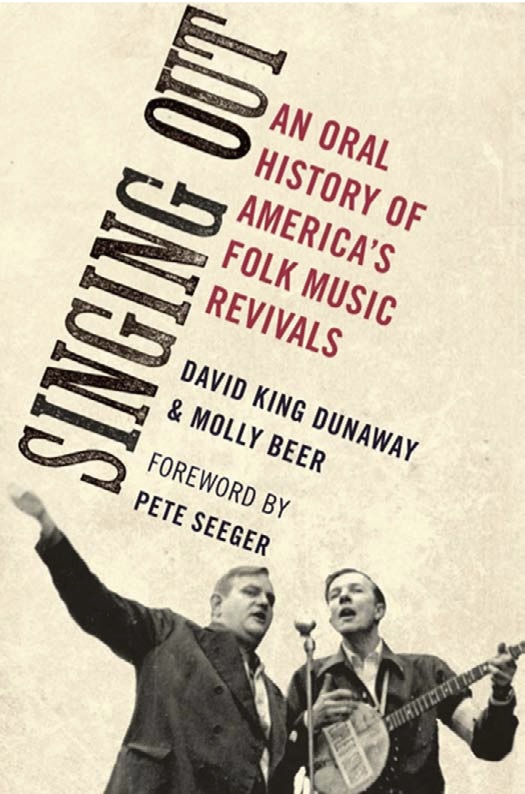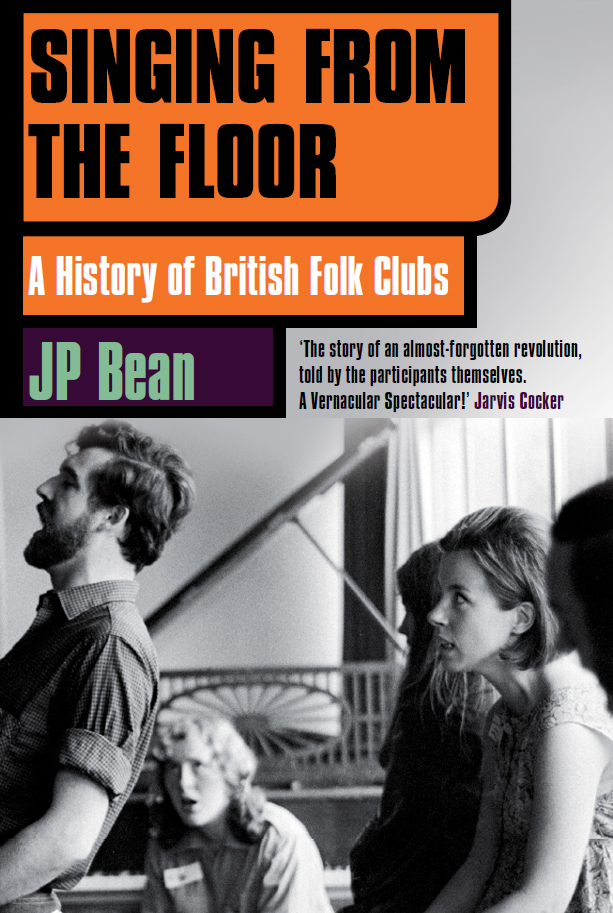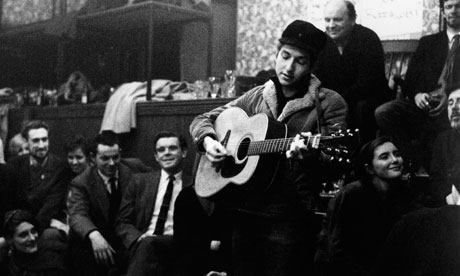The Folk Revival in Story and Song

 Over the last several months I read two books that approach the twentieth-century folk revival(s) through the medium of oral history: Singing Out: An Oral History of America’s Folk Music Revivals by David King Dunaway and Molly Beer (Oxford University Press, 2010) and Singing from the Floor: A History of British Folk Clubs by J.P. Bean (Faber & Faber, 2014). Both use oral history to great effect, adopting a similar format whereby the authors arrange interview quotations in dialogue in chronological and thematic sections. Dunaway and Beer’s book is based on interviews collected over more than thirty years, as well as additional sources, and historical narrative is interspersed with the voices of the participants. Bean’s work is somewhat more limited, being based only on his own recent interviews, thereby excluding singers who passed away in the intervening years (though many are discussed in absentia by their contemporaries). Taken together, they paint a broad picture of the trans-Atlantic folk scene in the twentieth century through the stories of its movers and shakers.
Over the last several months I read two books that approach the twentieth-century folk revival(s) through the medium of oral history: Singing Out: An Oral History of America’s Folk Music Revivals by David King Dunaway and Molly Beer (Oxford University Press, 2010) and Singing from the Floor: A History of British Folk Clubs by J.P. Bean (Faber & Faber, 2014). Both use oral history to great effect, adopting a similar format whereby the authors arrange interview quotations in dialogue in chronological and thematic sections. Dunaway and Beer’s book is based on interviews collected over more than thirty years, as well as additional sources, and historical narrative is interspersed with the voices of the participants. Bean’s work is somewhat more limited, being based only on his own recent interviews, thereby excluding singers who passed away in the intervening years (though many are discussed in absentia by their contemporaries). Taken together, they paint a broad picture of the trans-Atlantic folk scene in the twentieth century through the stories of its movers and shakers.
As I read these books, I realized that I was spending a considerable amount of time delving through my iTunes collection and the vast realms of YouTube listening to recordings of songs and singers mentioned in the texts. Neither book came with a CD or playlist, so I’ve created my own. These five songs receive prominent mention and encapsulate the development of the British and American folk revivals and the links between them across space and time.
1) Barbara Allen
http://www.youtube.com/watch?v=9l3VePGR-QA
The song ‘Barbara Allen’ originated in England or Scotland at least three hundred years ago. It appears as number 84 in Francis J. Child’s multi-volume collection from the late nineteenth century, English and Scottish Ballads. This work contains variations of 305 songs comprising a ‘canon’ found on both sides of the Atlantic, including two versions of ‘Barbara Allen’ (though dozens, perhaps even hundreds, of versions of the song exist). Jean Ritchie was born into a family of singers in Kentucky and rose to prominence on the folk scene from the late 1940s. She and her husband George Pickow received a Fulbright grant to travel to Britain and Ireland where they collected music and photographs. There they followed in Child’s footsteps by tracing links between the British, Irish, and American traditions, but unlike him they collected primarily from living people. This shift from collecting static, often edited, words on a page to live performance (enabled by improved recording technology), represents a key shift from the earliest folk collectors to the post-war revival.
2) Goodnight Irene
John and Alan Lomax found singer and twelve-string guitar player Huddie Leadbetter (‘Lead Belly’) at a prison in Louisiana. They recorded him for the Library of Congress and in 1936 published Negro Folk Songs as Sung by Lead Belly. Though they parted company shortly thereafter, his songs and style had an enduring legacy. The Weavers, Frank Sinatra, Ry Cooder, and many others covered his song ‘Goodnight Irene’ over the years. As is apparent from this video, Lead Belly always dressed well when performing. Tom Paley recalls, ‘even at his house when it was just a gathering of other performers, he would be dressed to the nines. He would have a waistcoat on and a bow-tie, everything clean and trousers knife-edged. And when he did a number he would introduce it as he did on stage. It was a whole performance, a very formal kind of thing.’[1]
3) Tom Dooley
‘Tom Dooley’ is a ballad based on the life and death of Tom Dula, who was hanged for murder in 1868 in North Carolina. It was first recorded in 1929 and published by Alan Lomax in 1947, but The Kingston Trio brought it into the mainstream with their 1958 recording that hit #1 on the Billboard charts. They credit singer Frank Proffitt’s version as their inspiration. Dunaway and Beer call groups like the Kingston Trio ‘musical translators’ for their role in introducing a wider audience to folk song. As singer-songwriter Si Kahn says, ‘for everyone who sings “lay down your head Tom Dooley” the way the Kingston Trio did it, there is probably as many who went back and found Frank Proffitt, as far as we know, the earliest version recorded, and sing it exactly the way he does. So revivalism circles back to the roots and my guess is the music will survive all this.’[2]
4) Shoals of Herring
Across the Atlantic, the British folk revival was in full swing and people and songs went back and forth. Two of the most influential participants on the British side were Ewan MacColl and Peggy Seeger, whose marriage in itself signifies the ties that crossed the ocean. While MacColl is sometimes disparaged for his purist tendencies and role in the conservative Critics Group, he was a powerful force within the movement and also wrote some very fine songs. ‘Shoals of Herring’ was written for the BBC Radio Ballad Singing the Fishing (broadcast in 1962) and has since entered the folk tradition.
5) Blowin’ in the Wind
The one person who gets the most space in both books is undoubtedly Bob Dylan. He went from being a kid who hung around Greenwich Village to a major force on an international stage. While still relatively little-known, he visited London for four weeks from 1962-3 and appeared in a few folk clubs, to a mixed reception according to Bean’s interviewees. However, his skill in penning lyrics was widely acknowledged and American folk musician Happy Traum recalled of first hearing ‘Blowin’ in the Wind’, ‘it blew us away. I can visualize the moment’.[3] As one final link between oral history and the folk revival, listen to Studs Terkel interview a young Bob Dylan in 1963; he sings six songs, including ‘Blowin’ in the Wind’.
Dylan is, I think, a final key in understanding the transformation wrought by the folk revival: it moved along a bumpy road from the collection of ‘authentic’ versions of songs, written in print, to recording of living traditional singers, to refashioning those old songs, to adapting the melodies and ideas into new songs, and bringing those and the whole tradition behind them to a popular audience. Some disliked the way Dylan ‘borrowed’ or used songs he got from others without acknowledging them and others disliked the fact that he ‘went electric’, but if even one out of ten Dylan fans moved from his music to interest in its roots, then the folk revival was a success. Folk music can only be folk music if it is a living tradition to which each generation gives new meaning.

______________________________
[1] In Bean, Singing from the Floor, p.160.
[2] In Dunaway & Beer, Singing Out, p.131
[3] In Dunaway & Beer, Singing Out, p.124.